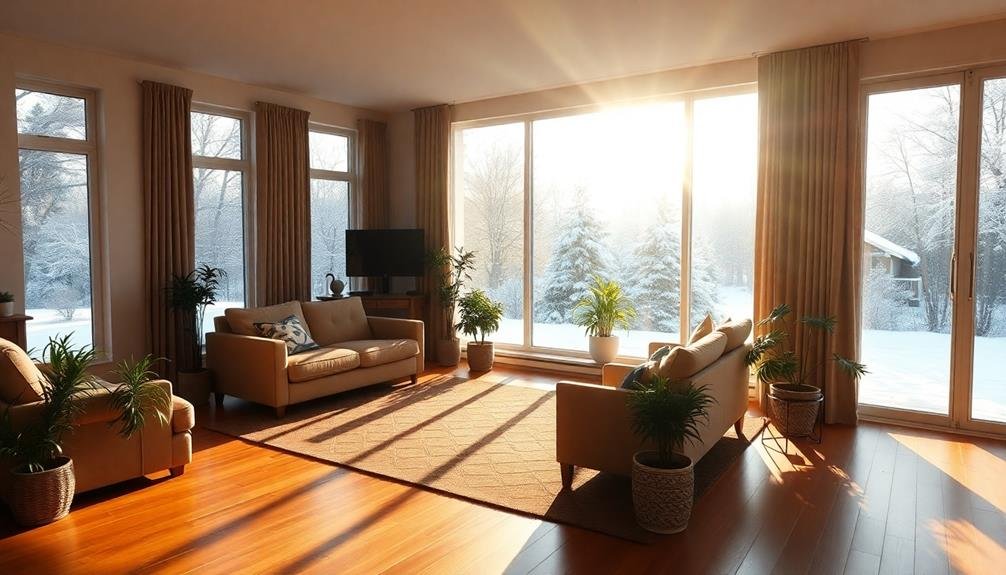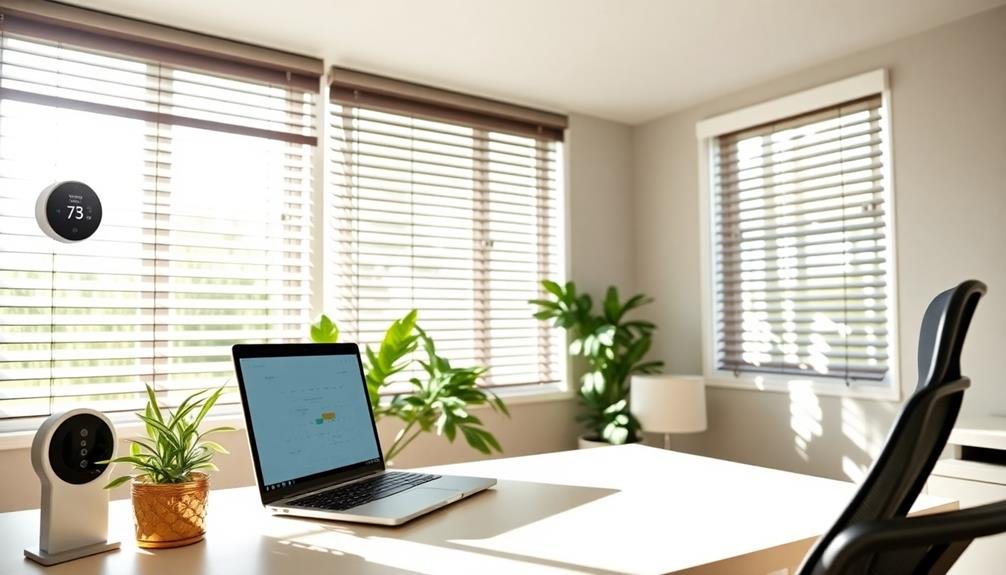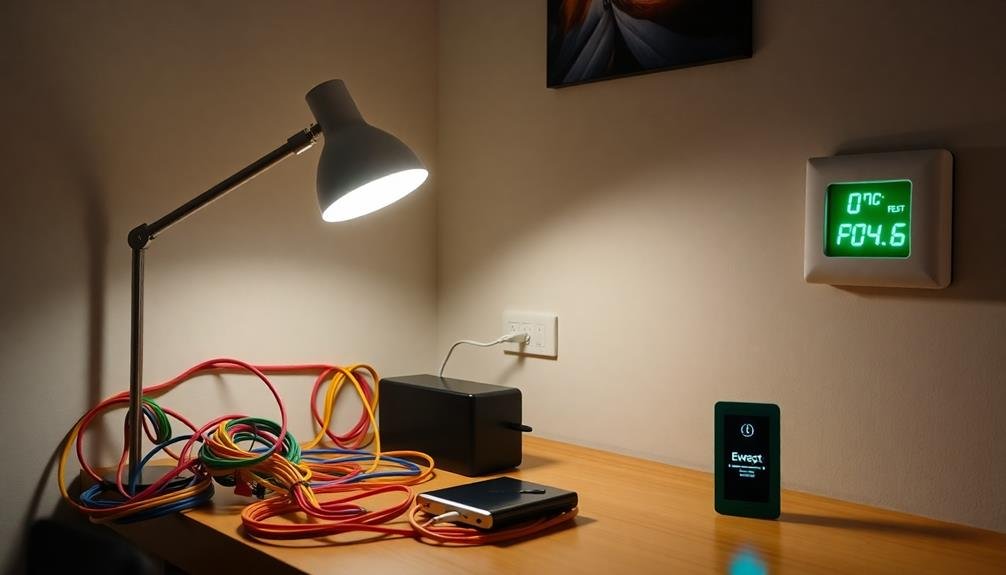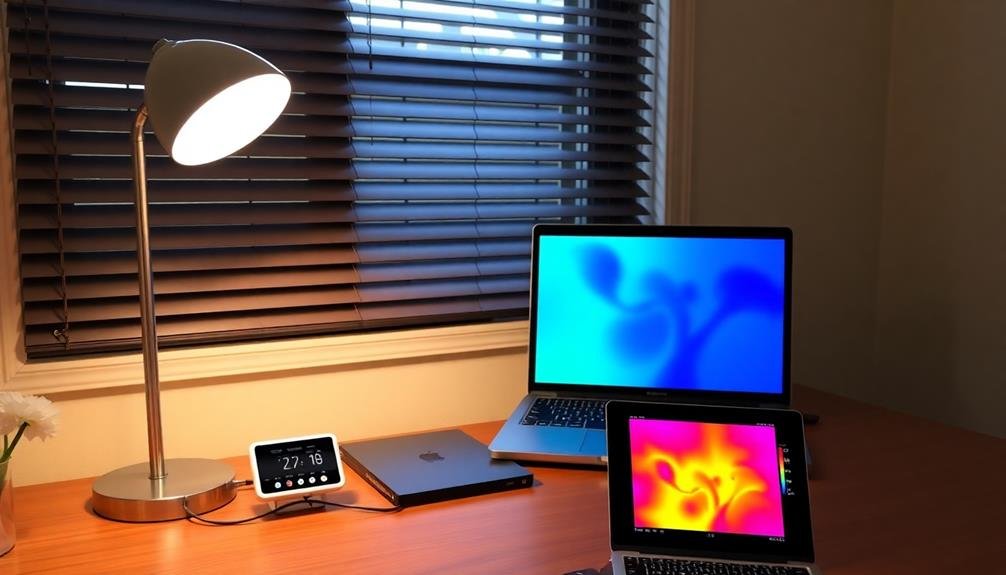To boost winter heating with sunshine, start by positioning your windows for maximum sunlight, especially on the south side of your home. Install solar air heaters on south-facing walls to capture and convert sunlight into warm air. Use thermal mass materials like concrete or stone to absorb heat during the day and release it at night. Create a sunroom or greenhouse on the south-facing side to harness solar energy effectively. Implement passive solar design principles in your home's layout and construction to maximize sun exposure and heat retention. These strategies can greatly reduce your reliance on traditional heating systems and lower energy bills. Discover how to transform your home into a sun-powered winter haven.
Position Windows for Maximum Sunlight

To maximize natural heat during winter, you'll want to position your windows strategically. South-facing windows receive the most sunlight throughout the day, so prioritize these for heating. Remove any obstructions like trees or bushes that might block sunlight. Consider installing larger windows on the south side of your home to increase solar gain.
East-facing windows capture morning sun, while west-facing ones benefit from afternoon rays. Utilize these for supplementary heat and light. North-facing windows typically receive little direct sunlight, so focus on insulating them well to prevent heat loss.
Keep your windows clean to allow maximum light penetration. Install thermal curtains or blinds to trap heat at night but open them during the day to let sunlight in. Consider adding reflective films to windows that don't receive direct sunlight to redirect heat into your home.
If you're building or renovating, design your floor plan with sun exposure in mind. Place frequently used rooms on the south side to benefit from natural warmth.
Use materials with high thermal mass, like concrete or stone floors, to absorb and slowly release heat throughout the day.
Install Solar Air Heaters
For an additional boost to your winter heating, consider installing solar air heaters. These devices capture sunlight and convert it into warm air, which is then circulated throughout your home.
Solar air heaters can be mounted on south-facing walls or roofs, where they'll receive maximum sun exposure during winter months.
You'll find various types of solar air heaters available, including flat-plate collectors and transpired collectors. Flat-plate collectors use a dark absorber plate to collect heat, while transpired collectors feature a perforated metal sheet that allows air to pass through and be heated.
Both types can considerably reduce your reliance on traditional heating systems and lower your energy bills.
Installation typically involves mounting the collector, creating an air intake, and connecting it to your home's ductwork or ventilation system. While professional installation is recommended, some DIY enthusiasts may tackle this project themselves.
Remember to check local building codes and obtain necessary permits before installation.
Solar air heaters work best in sunny climates but can still provide benefits in areas with moderate sunlight. They're particularly effective when combined with other passive solar heating strategies, creating a thorough approach to harnessing the sun's energy for winter warmth.
Use Thermal Mass Materials

Thermal mass materials play a crucial role in passive solar heating strategies. They absorb heat during the day and release it slowly at night, helping to maintain a stable indoor temperature. You'll want to incorporate these materials into your home's design or renovation to maximize solar heat gain and retention.
Common thermal mass materials include:
| Material | Heat Capacity |
|---|---|
| Concrete | High |
| Stone | High |
| Brick | Medium-High |
| Water | Very High |
| Ceramic Tile | Medium |
To effectively use thermal mass, place these materials in areas that receive direct sunlight during winter. South-facing windows are ideal locations. You can install concrete or tile floors, add a stone feature wall, or even incorporate water walls or containers.
Create Sunrooms or Greenhouses
Beyond thermal mass materials, sunrooms and greenhouses offer excellent opportunities to harness solar energy for winter heating. These structures, typically made with large glass panels, capture and retain heat from the sun, creating warm microclimates within your home.
To maximize their efficiency, position your sunroom or greenhouse on the south-facing side of your house. This placement guarantees peak sun exposure throughout the day. Use double or triple-pane glass to minimize heat loss and consider adding insulating curtains or blinds for nighttime use.
You can enhance the heating potential by incorporating thermal mass materials like concrete floors or water barrels within these spaces. They'll absorb heat during the day and release it slowly at night, maintaining a more stable temperature.
Don't forget to include proper ventilation to prevent overheating on sunny winter days. Ceiling fans can help distribute warm air throughout your home, while strategically placed vents allow heat to circulate naturally.
Implement Passive Solar Design

In line with sustainable heating practices, passive solar design stands out as a thorough approach to harnessing the sun's energy. You'll need to take into account several factors when implementing this design, including building orientation, window placement, and thermal mass materials.
Orient your home's longest side facing south to maximize sun exposure. You'll want to place most of your windows on this side to capture sunlight during winter months. Use overhangs or awnings to shade these windows in summer, preventing overheating.
Incorporate thermal mass materials like concrete, brick, or stone into your home's design. These materials absorb heat during the day and release it at night, maintaining a comfortable temperature.
Here's a comparison of common thermal mass materials:
| Material | Heat Capacity | Cost | Durability |
|---|---|---|---|
| Concrete | High | Low | Excellent |
| Brick | Medium | Medium | Very Good |
| Stone | High | High | Excellent |
| Water | Very High | Low | Good |
Don't forget to insulate well and use double or triple-pane windows to retain heat. By implementing these passive solar design principles, you'll greatly reduce your reliance on artificial heating and lower your energy bills.
Frequently Asked Questions
How Much Can Solar Heating Reduce Energy Bills During Winter?
You can considerably reduce your winter energy bills with solar heating. Depending on your setup and location, you'll save 20-50% on heating costs. It's an eco-friendly option that'll warm your home and your wallet.
Are There Government Incentives for Installing Solar Heating Systems?
Yes, you'll find various government incentives for solar heating systems. These can include tax credits, rebates, and grants at federal, state, and local levels. Check with your local energy office or visit the DSIRE website for specific options.
Can Solar Heating Be Effective in Cloudy or Snowy Climates?
Yes, you can still benefit from solar heating in cloudy or snowy climates. While efficiency decreases, modern systems are designed to capture diffuse light. You'll see reduced output but can still offset energy costs and reduce emissions.
What Maintenance Is Required for Solar Heating Systems?
You'll need to clean solar panels regularly, check for damage, and guarantee proper insulation. It's important to inspect fluid levels, pump operation, and electrical connections. Don't forget to clear snow and debris from collectors when necessary.
How Long Does It Take to Recoup Costs of Solar Heating Installations?
You'll typically recoup solar heating installation costs in 5-10 years. It depends on your energy usage, local utility rates, and available incentives. You'll see faster payback if you're replacing an older, inefficient heating system.
In Summary
You've now got five powerful ways to harness the sun's warmth during winter. By positioning windows, adding solar air heaters, using thermal mass, creating sunrooms, and implementing passive solar design, you'll reduce your reliance on traditional heating methods. These strategies aren't just eco-friendly; they'll also save you money on energy bills. Don't let winter's chill get you down – embrace these solar heating techniques and enjoy a cozier, more sustainable home all season long.





Leave a Reply